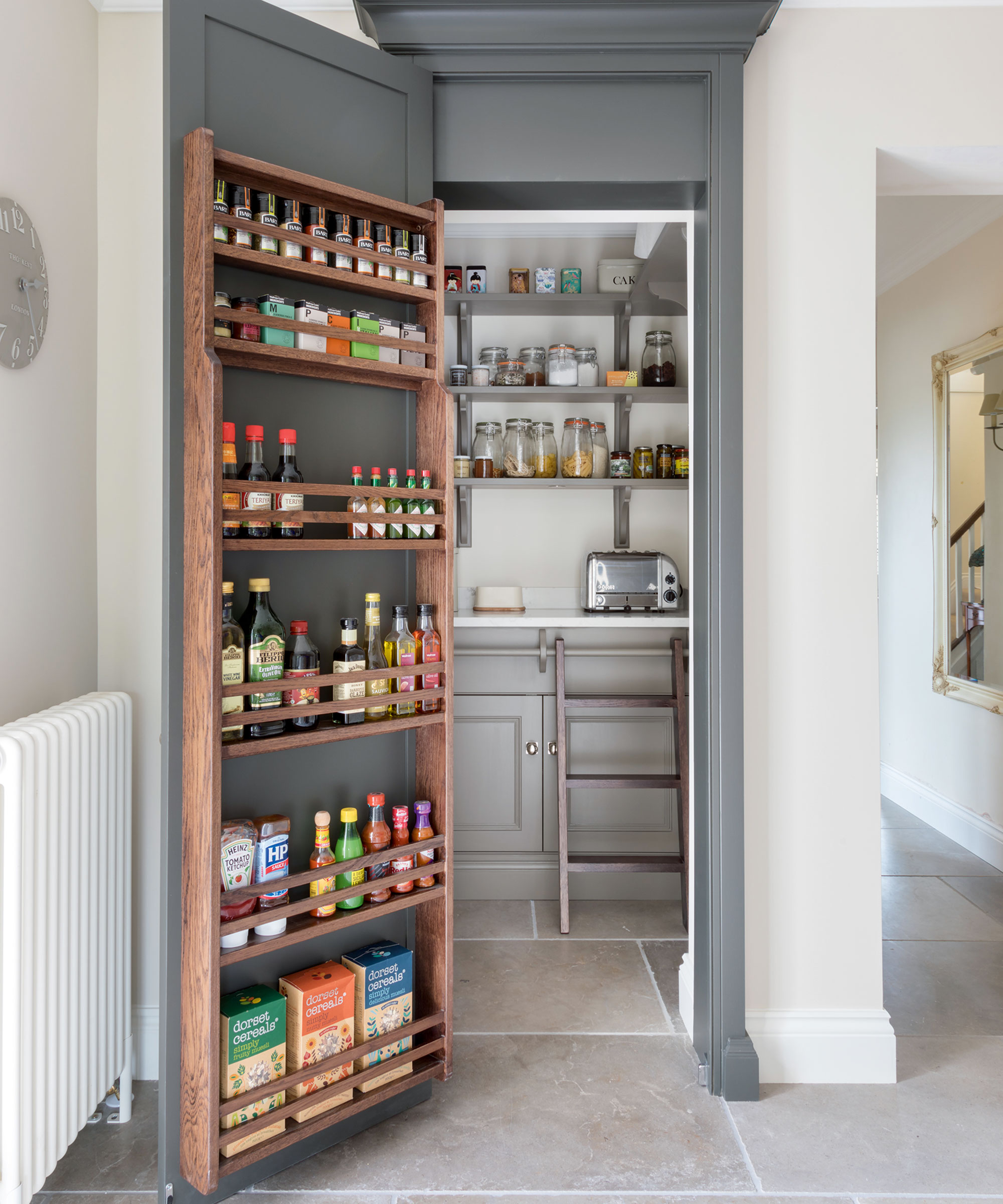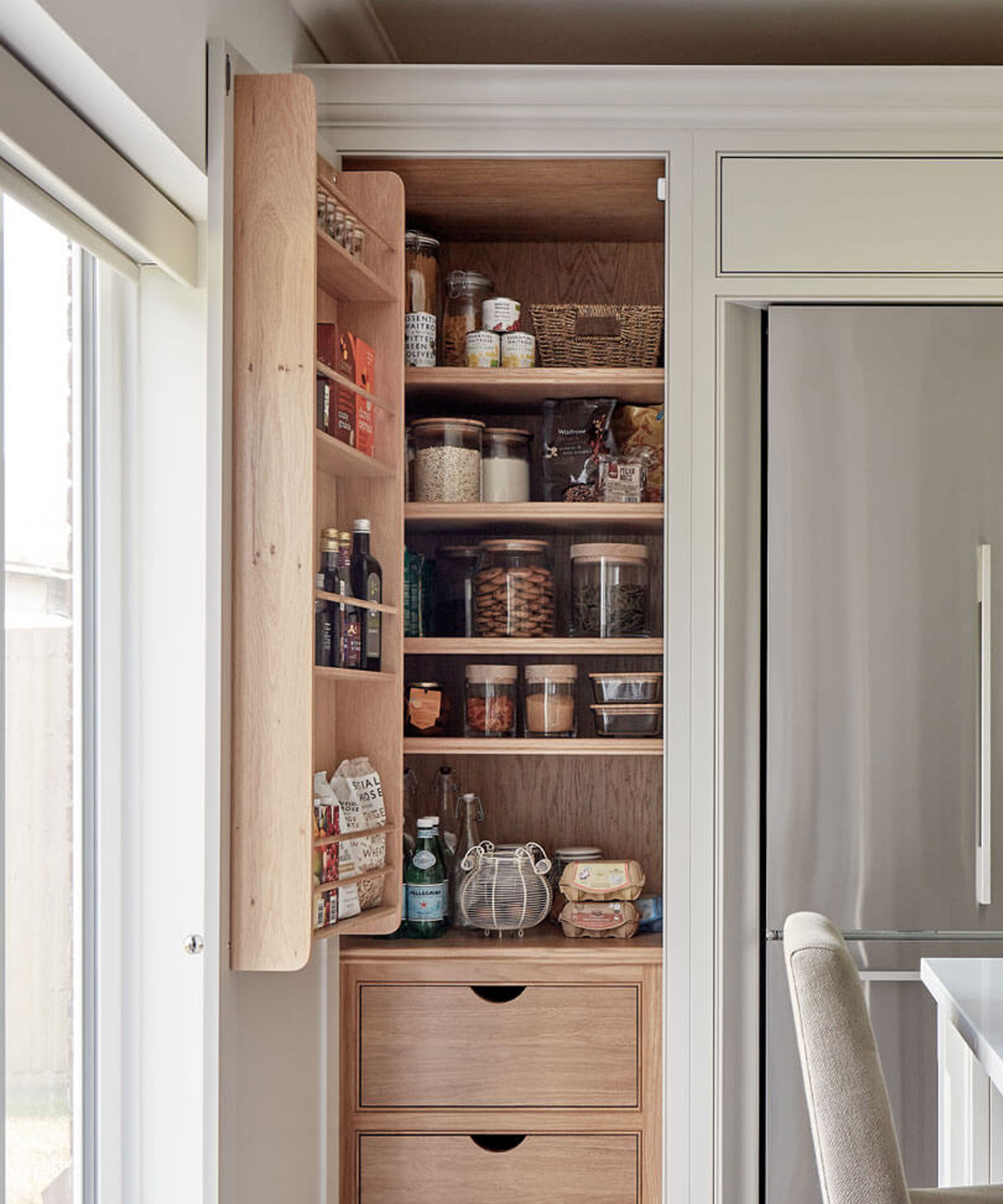8 ways to organize canned goods so you can actually find them – expert tips
Step one, organizing your cans, step two, finding effective storage solutions so you can always find them


Although cans will most likely take up a large section of space in your kitchen shelves, pantry, fridge, or even garage, they are items that people rarely consider how to organize. From personal experience of never being able to locate the can I need when I need, organizing your cans so you can actually find them is a great time saver.
We've all experienced the annoyance of rummaging desperately through our pantry or kitchen shelves to find the one that is essential for our meal. One of the staples of having an organized kitchen is ensuring all smaller items like cans are organized not just so they are easy to find, but also in an aesthetically pleasing way that maximizes space and minimizes food waste.
Our experts have explained the top eight ways they organize their cans to make them accessible.
How to organize canned goods so you can actually find them
Assess your kitchen and pantry storage options to identify how best to arrange and organize your cans. Follow these steps from professionals to organize and store your cans.
1. Eliminate clutter

'Eliminating clutter is the first step to effectively organizing your home,' says Tom Nolan, founder of home improvement company, All Star Home. 'When you’re looking for something, the first thing you’ll find is everything you’re not looking for.
'Take out the visual distractions by removing the things that you don’t want or need. Getting rid of clutter is the best way to ensure you can get and stay organized.'
While decluttering your kitchen you should clear an area that you will dedicate for the sole storage of canned foods.
Design expertise in your inbox – from inspiring decorating ideas and beautiful celebrity homes to practical gardening advice and shopping round-ups.
Prerna Jain, owner of Ministry Of Cleaning adds, 'Periodically review your canned goods and donate items you no longer plan to use or those nearing expiration. This helps declutter your pantry and supports those in need.'

Tom Nolan is the founder of All Star Home, a home improvement company that helps individuals turn their house into the home of their dreams. As a home improvement expert, Tom is always looking for ways that people can live better in their homes, including minimizing clutter.
2. Categorization is key

There are a few different categories you can sort your cans into. Sorting your cans based on type or expiration date will make it simple to locate the can you require when you need it.
Tom Nolan suggests, 'Keeping must-haves at eye level. This is a great trick that keeps the things you use most frequently easily in reach. It’s a great way to prioritize what you need the most, so you can consistently cycle what’s out of season or out of use. As things get further and further away from your working space, you can easily find other places to put them, helping you build a system that works for you.'
'Categorize your canned goods by type (e.g., vegetables, soups, sauces, etc.) to make it easier to locate what you need,' recommends Angela Rubin, owner of Hellamaid.
'Customizing your shelving allows you to tailor your pantry space to your unique cooking and dietary preferences,' explains Rich Mullins, owner of H2O Plumbing. 'For example, if you frequently bake, you can create a section with shallow shelves to store baking essentials like condensed milk, pie fillings, and cake mixes. This level of personalization optimizes both accessibility and aesthetics in your pantry.'
You should also always arrange your cans according to their expiry so that you use the oldest ones first.

Hellamaid is an award-winning cleaning company in Canada that's been featured on multiple global media brands.
3. Labelling

You can further simplify your organization system by labeling each category
of cans. This can be done easily with a label maker, such as this Wireless Label Maker Machine from Amazon.
Angela Rubin says, 'Create labels for each section of your pantry or storage area. Clearly marked shelves make it effortless to identify where specific types of cans are stored, reducing search time and frustration.'
This will help you quickly identify where certain items are located at a glance, and keep items in their dedicated spot.
4. Implement a 'first in, first out' policy

Angela Rubin advises, 'Implement the first in first out method to ensure you use your oldest canned items before newer ones. Place recently purchased cans at the back of the row or on a separate shelf. This minimizes the risk of cans expiring before you get a chance to use them.'
The best storage solution for ensuring you implement this rule is a can dispenser, such as this Can Organizer for Refrigerator from Amazon.
5. Use can racks or dispensers

Remember, the best way to keep your cans organized is to find effective kitchen storage solutions that you can integrate into your pantry, kitchen cupboards, or fridge. One of our favorite methods for organizing cans is by employing gravity can dispensers.
Rich Mullins says, 'Gravity can dispensers are ingenious solutions for maintaining order in your pantry. These simple devices ensure that the oldest can in your collection is always at the front, making it easy to rotate your stock and use items before they expire.
'They come in various sizes to accommodate different can sizes, from standard soup cans to larger canned vegetables. Gravity dispensers not only help with organization but also minimize food waste by encouraging you to use items in a timely manner.'
6. Use an organizer with levels
A simple way to store and label your cans based on their category is to use an organizer with levels, such as this wooden kitchen shelf riser from West Elm.
Tommy Mello explains, 'Stacking cans lets you see what's on the front of each label. Cans can be stored on their sides on a stackable can rack in a cabinet or on a pantry shelf, while cans can be stored upright on an expandable tiered shelf.'
This can allow you to keep track of which items you do have and which you are running low on to add to your shopping list.
7. Shelf dividers

Shelf dividers are an easy option for creating a systematic order on your shelves, and are easy to adjust and remove.
'Shelf dividers are versatile tools that can be used to separate rows of cans on your pantry shelves,' says Janille Mangat, cleaning specialist at VMAP Cleaning Services. 'They prevent cans from toppling over and creating a disorganized mess. Shelf dividers are adjustable, so you can customize the spacing to accommodate different can sizes. This organization method ensures that each type of canned item has its designated spot, making them easy to locate.'
We recommend these wooden shelf dividers from Amazon.
8. Install pull out shelves

If space in your kitchen is limited, and you constantly find yourself having to pull everything out of your cupboard to reorganize whenever you want to find the can you need or place some new cans at the back of your shelves, then you may want to consider installing pull out shelves.
'Installing pull-out shelves in your pantry or kitchen cabinets is an excellent way to maximize space and keep canned goods organized,' recommends Janille Mangat. 'These shelves allow you to access cans from both sides, making it easy to grab what you need. They also come in various sizes and styles, so you can choose the ones that best fit your storage area.'
This will allow you to easily slide out of the shelf and quickly find what you need without having to rearrange other items, meaning you can afford to have less space between shelves.
We love this Kynlee Wood shelf from Wayfair. However, ensure to find drawers that are the right size for your pantry before buying.
FAQs
What should you avoid doing when storing cans?
'I would not recommend stacking the cans on top of each other as this can become a safety hazard. It will be difficult to access cans from the bottom of the stack and you won’t be able to tell which items are getting older or expiring faster,' warns Janille Mangat, cleaning specialist at VMAP Cleaning Services.
'Make sure instead to keep your canned goods stored in cool, dark areas. This will help them last longer and taste better when you open them up.'
How do you integrate food organization into your kitchen's design?
'Integrating organization into the design of your home can be a great way to maximize space, though it’s one of the hardest ways to expand your organization options,' says Tom Nolan, home improvement expert at All Star Home. 'This includes built-in bookshelves, which can give you unique ways to maximize the vertical space in your home. You can also build storage solutions in your garage, including racks to slide in plastic totes.
'This helps you find what you need by making sure your storage maximizes the space you have, giving you storage where you might not normally have it.'
What is the best way to store cans in a fridge?
'There’s nothing more frustrating than not being able to reach for cans in a well-stocked fridge! Or to battle through the soggy cardboard fridge packs to grab one if you’re in a rush,' says Simon Glanville, managing director at online retailer A Place for Everything.
'Opt for sturdier versions that will also prevent cans of fizzy drink or beer rolling around in the fridge on those days when you’ve worked your way through food before the next shop and the shelves are emptier!
'There are various different options, but go for translucent products so you can keep an eye on when stocks are running low and those which are versatile e.g. with a lid so you can store smaller tubs and packs on top.'
We recommend this Utopia Kitchen Soda Can Dispenser For Refrigerator from Amazon.
Re-organizing your cans regularly will help ensure that everything stays in its place and nothing gets lost or forgotten about. It's also a great way to check whether you're running low on any particular items so you can stock up when necessary.

Lola Houlton is a news writer for Homes & Gardens. She has been writing content for Future PLC for the past six years, in particular Homes & Gardens, Real Homes and GardeningEtc. She writes on a broad range of subjects, including practical household advice, recipe articles, and product reviews, working closely with experts in their fields to cover everything from heating to home organization through to house plants. Lola is a graduate, who completed her degree in Psychology at the University of Sussex. She has also spent some time working at the BBC.


